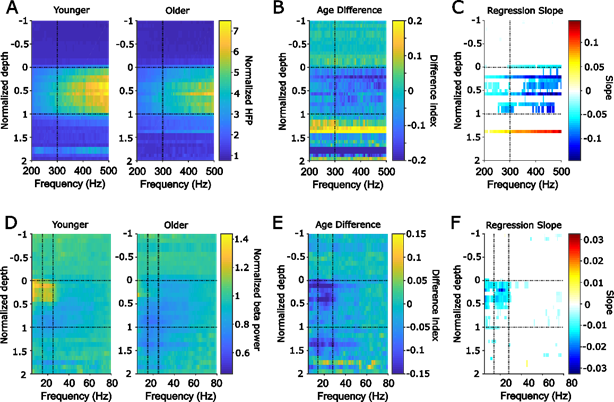Category: Parkinson's Disease: Pathophysiology
Objective: Ongoing research of electrophysiological characteristics in Parkinson`s do not take aging brain into account. So, we aim is to show impact of aging on beta-oscillations and oscillatory patterns in rest/movement at cortical, sub-cortical levels.
Background: Initially, EEG variations were studied as a marker for pathological aging. It is currently assumed that in healthy aging analogous/related variations occur. Aging is linked to the flattening of a ramp(angle-slope) in the power-spectrum plus an rise in high-frequency-power(HFP). The lack of tests for individuals suffering as of PD results in higher needs for care and earlier housing in tertiary health care-research centers.
Method: A high-density EEG data in rest and a simple motor task. We acquire electrophysiological data intra and post op merging micro-electrode recordings(MER), local field potentials (LFP) with percept-medtronic. Spectral-power, frequency-of-alpha behavioral-activity decreases also differing theta/delta power-activity progresses as a function-of-age. In regard to PD, variations in beta-band through aging are of specific significance, as PD is differentiated with extreme beta-synchronization in the cortico-basal-ganglia net-work.
Results: Beta activity is thought to be connected to disease-gravity, motor-impairment. But usually aging-analyses show overall growth in power of beta-band by age, certain point to a non-linear correlation, rise in power-up to late-middle age plus a reduction afterward. Changes in beta unrelated to cerebral-effects of aging. A decrease in beta prior to activity induction is reflected in basal-ganglia, motor-cortex, in STN. This decrease seems more evident in adults. Recent information on contact amongst ageing, Parkinson`s over EEG patterns of brain is scarce, data is scanty. We showed that older Parkinson`s have a lesser high-level frequency-power in STN. Results show calendar-age is not just linked by a decrease in HFP though a diminution in STNbeta(Figure1).
Conclusion: The causes of disease-process also aging on electro-neuro-physiological activity, especially over beta-movement/activity, involve a biological-interaction. Present research of electro-physiological-characteristics within Parkinson`s ought to hence not just linked to disease-process within substantia-nigra(SN) pars-compacta, yet aging-brain into account. So, this may result in new insights that ultimately suggest chances to alter the clinical-experimental evolution of disease.
References: 1. Janssen, Zwartjes DGM, Temel Y, Kranen-Mastenbroek V, Duits A, Bour L, Veltink P, Heida T, Visser-Vandewalle V. Subthalamic nucleus neuronal responses to single cortical stimuli in a Parkinson’s disease patient during stereotactic surgery. Movement Disorders 2012 Mar;27(3):435- 8.
2. Van Dijk KJ, Janssen MLF, Zwartjes DGM, Temel Y, Visser-Vandewalle V, Veltink PH, Benazzouz A, Heida T. Spatial localization of sources in the rat subthalamic motor region using an inverse current source density method. Frontiers in Neural Circuits, 2016.
3. van Zwieten G, Roberts MJ, Schaper FLVW, Smit JV, Temel Y, Janssen MLF. Noise-induced neurophysiological alterations in the rat medial geniculate body and thalamocortical desynchronization by deep brain stimulation. J Neurophysiol. 2021 Feb 1;125(2):661-671.
4. Bos MJ, Buhre WF, Temel Y, Joosten EAJ, Absalom AR, Janssen MLF. Effect of anesthesia on microelectrode recordings during deep brain stimulation surgery: a narrative review. J Neurosurg Anesthesiol. 2020 Jan 7.
To cite this abstract in AMA style:
V. Rama Raju. Aging brain in Parkinson`s: A study through biomarkers [abstract]. Mov Disord. 2023; 38 (suppl 1). https://www.mdsabstracts.org/abstract/aging-brain-in-parkinsons-a-study-through-biomarkers/. Accessed January 5, 2026.« Back to 2023 International Congress
MDS Abstracts - https://www.mdsabstracts.org/abstract/aging-brain-in-parkinsons-a-study-through-biomarkers/

